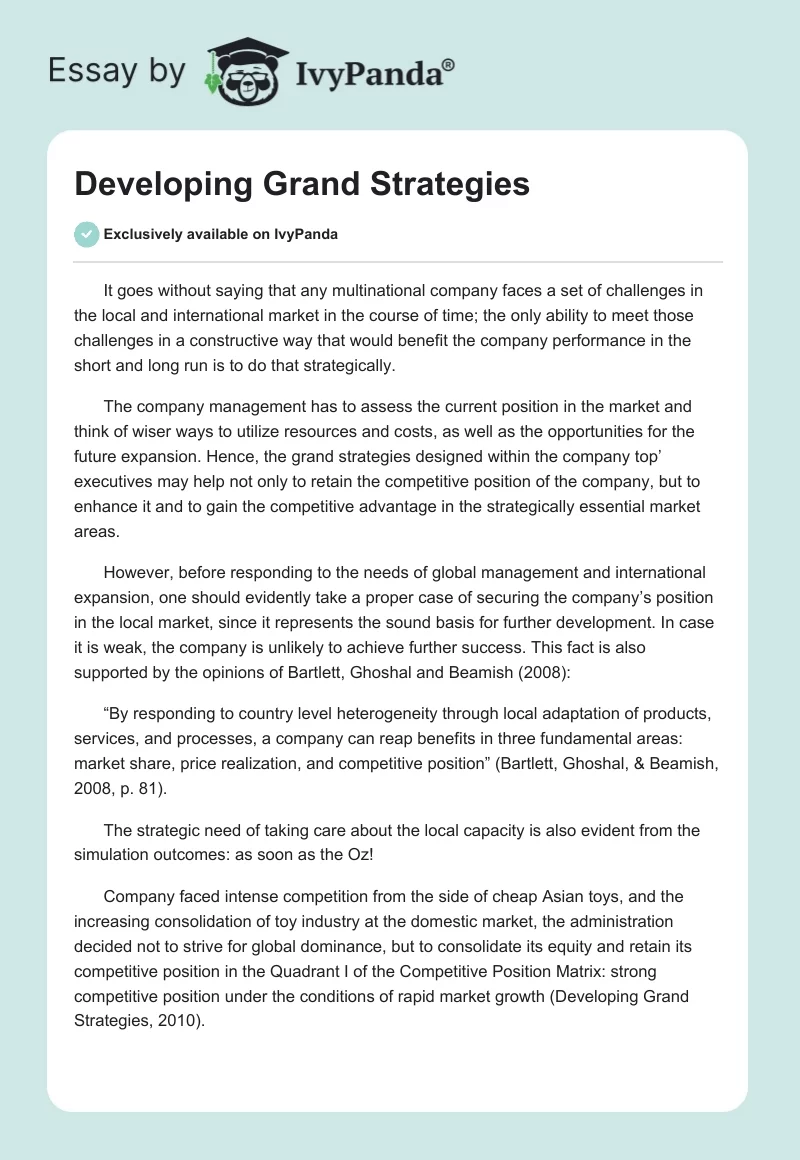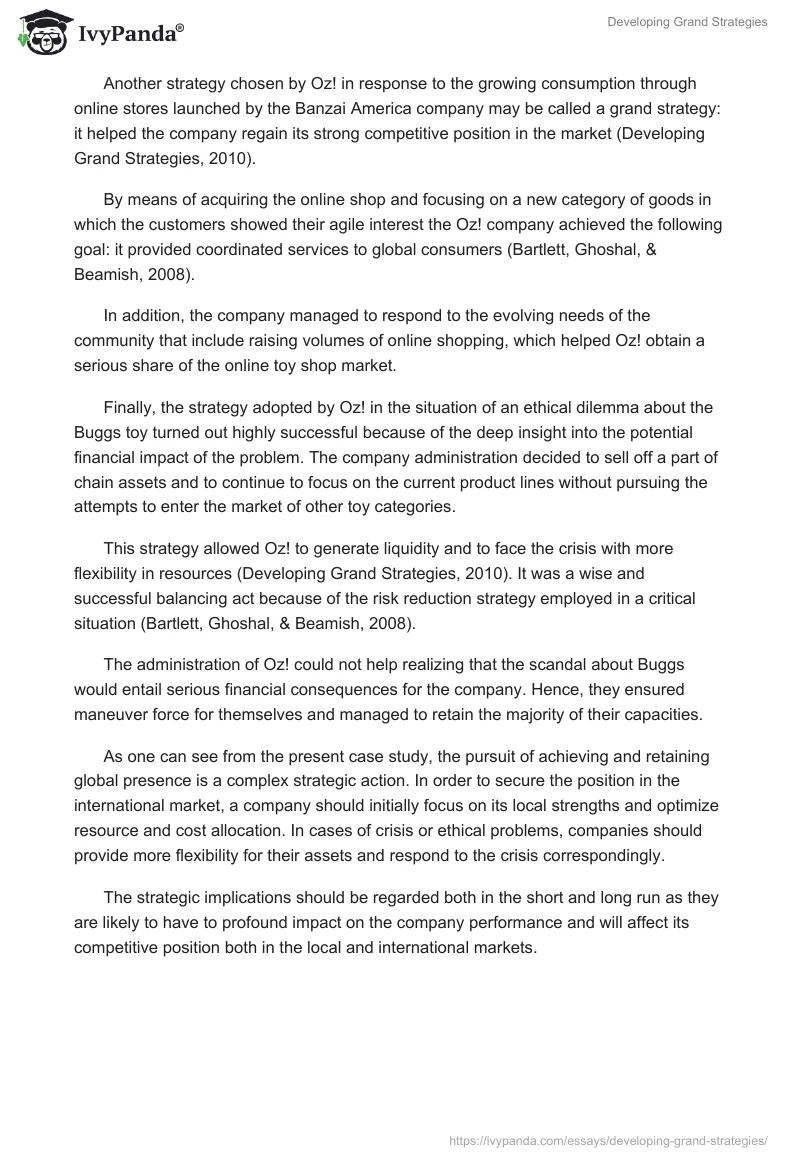It goes without saying that any multinational company faces a set of challenges in the local and international market in the course of time; the only ability to meet those challenges in a constructive way that would benefit the company performance in the short and long run is to do that strategically.
The company management has to assess the current position in the market and think of wiser ways to utilize resources and costs, as well as the opportunities for the future expansion. Hence, the grand strategies designed within the company top’ executives may help not only to retain the competitive position of the company, but to enhance it and to gain the competitive advantage in the strategically essential market areas.
However, before responding to the needs of global management and international expansion, one should evidently take a proper case of securing the company’s position in the local market, since it represents the sound basis for further development. In case it is weak, the company is unlikely to achieve further success. This fact is also supported by the opinions of Bartlett, Ghoshal and Beamish (2008):
“By responding to country level heterogeneity through local adaptation of products, services, and processes, a company can reap benefits in three fundamental areas: market share, price realization, and competitive position” (Bartlett, Ghoshal, & Beamish, 2008, p. 81).
The strategic need of taking care about the local capacity is also evident from the simulation outcomes: as soon as the Oz!
Company faced intense competition from the side of cheap Asian toys, and the increasing consolidation of toy industry at the domestic market, the administration decided not to strive for global dominance, but to consolidate its equity and retain its competitive position in the Quadrant I of the Competitive Position Matrix: strong competitive position under the conditions of rapid market growth (Developing Grand Strategies, 2010).
Another strategy chosen by Oz! in response to the growing consumption through online stores launched by the Banzai America company may be called a grand strategy: it helped the company regain its strong competitive position in the market (Developing Grand Strategies, 2010).
By means of acquiring the online shop and focusing on a new category of goods in which the customers showed their agile interest the Oz! company achieved the following goal: it provided coordinated services to global consumers (Bartlett, Ghoshal, & Beamish, 2008).
In addition, the company managed to respond to the evolving needs of the community that include raising volumes of online shopping, which helped Oz! obtain a serious share of the online toy shop market.
Finally, the strategy adopted by Oz! in the situation of an ethical dilemma about the Buggs toy turned out highly successful because of the deep insight into the potential financial impact of the problem. The company administration decided to sell off a part of chain assets and to continue to focus on the current product lines without pursuing the attempts to enter the market of other toy categories.
This strategy allowed Oz! to generate liquidity and to face the crisis with more flexibility in resources (Developing Grand Strategies, 2010). It was a wise and successful balancing act because of the risk reduction strategy employed in a critical situation (Bartlett, Ghoshal, & Beamish, 2008).
The administration of Oz! could not help realizing that the scandal about Buggs would entail serious financial consequences for the company. Hence, they ensured maneuver force for themselves and managed to retain the majority of their capacities.
As one can see from the present case study, the pursuit of achieving and retaining global presence is a complex strategic action. In order to secure the position in the international market, a company should initially focus on its local strengths and optimize resource and cost allocation. In cases of crisis or ethical problems, companies should provide more flexibility for their assets and respond to the crisis correspondingly.
The strategic implications should be regarded both in the short and long run as they are likely to have to profound impact on the company performance and will affect its competitive position both in the local and international markets.
References
Bartlett, C.A., Ghoshal, S., & Beamish, P. (2008). Transnational Management: Text, Cases, and Readings in Cross−Border Management. (5th ed.). New York: The McGraw-Hill Companies.
Developing Grand Strategies (2010). Web.


